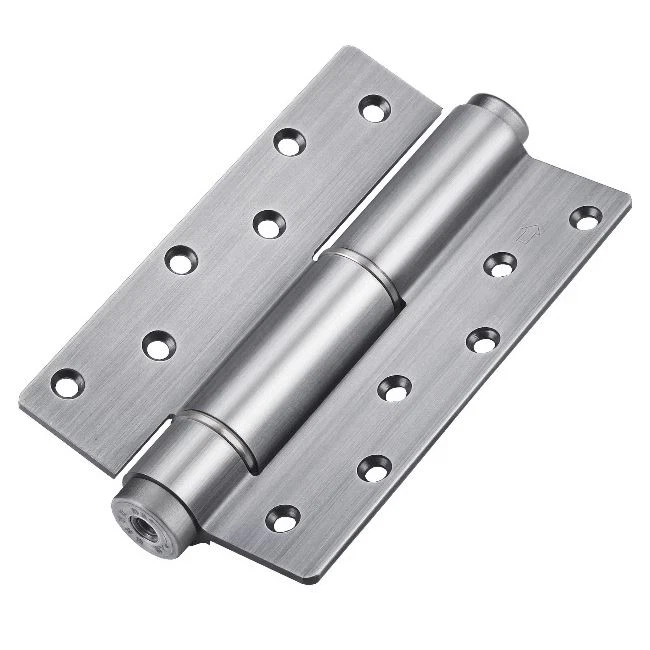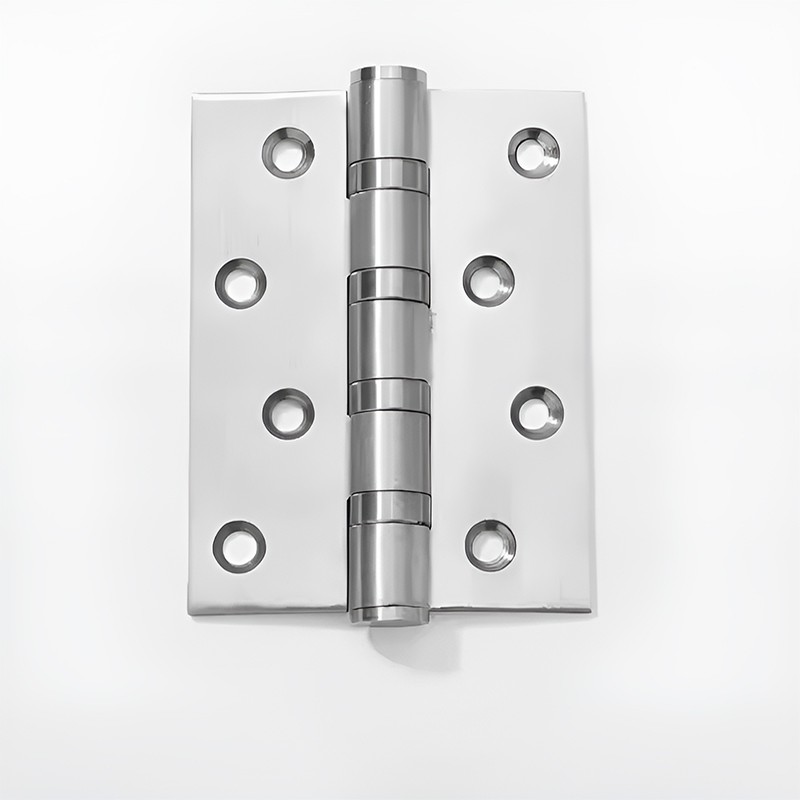Xi'an Happiness Express Import And Export Trade Co.,Ltd. : Your Professional Stainless Steel Flush Hinge Manufacturer!
Xi'an Happiness Express Import And Export Trade Co.,Ltd. is a lock factory that mainly produces interior door locks, including split locks, plate handle, triple lever locks, and matching cylinder locks. We offer a wide variety of styles, with about 800 sets of self-developed moulds to choose from.
Comprehensive Order Tracking and After-Sales Support
We promptly track order status, including production progress and shipment updates, keeping you informed in real-time. Our dedicated after-sales service team, made up of experienced professionals, ensures that whether it's product installation, maintenance, or replacement, we follow up throughout the entire process to resolve issues.
OEM & ODM Available
For medium and large customers, such as real estate developers, engineers, and lock distributors, we offer OEM/ODM customization services. We can configure door locks according to your specific needs and brand requirements. Additionally, we offer free logo design and customized packaging.
Rich Products
Our company mainly produces Door Lock, Mortise Lock Cylinder, Door Hinge, Door Stopper, etc., which are designed for use in both property and home doors.
Leading Service
We have many years of industry experience, a complete production management, quality supervision, and sales service operation system. Whether you want to purchase Door Lock or Mortise Lock Cylinder, just email your requirements and we can customize the product for you.
What is Stainless Steel Flush Hinge?
A Stainless Steel Flush Hinge is often used for cupboard doors in order to get a flush finish. The two sides of the hinge, the 'leaves', are different – one side fits inside of the other, rather than butting up against each other. These hinges are hidden when the door is closed, making for a clean finish on cabinets.
A Stainless Steel Flush Hinge is often used for cupboard doors in order to get a flush finish. The two sides of the hinge, the 'leaves', are different – one side fits inside of the other, rather than butting up against each other. These hinges are hidden when the door is closed, making for a clean finish on cabinets.
Hydraulic Hinges for Heavy Doors
The Hydraulic Hinges for Heavy Doors is a door-closing technical system that works on the hydraulic mechanism. The working process is a result of fluids under pressure. The hydraulic fluid present moves from one box to another by passing through little available spaces. The fluid switching speed is influenced by the section of those spaces, which results in the hydraulic movement due to the added pressure exerted on the hydraulic fluid.
A black door hinge is a common home improvement material. Hinges are typically bifold, consisting of two metal or non-metal blades connected by a pin, allowing two parts of an object to move. High-quality hinges are usually made of stainless steel or brass. When selecting hinges, choose ones with good sealing performance and test them by opening and closing a few times to check their flexibility and ease of use.
A hidden hinge, also known as a concealed hinge, can't be seen when viewing the door from the front and/or side. They lay flush against a face frame and are invisible from the outside of an appliance. Heavy-duty hinges are engineered to handle higher weights and last through more cycles of opening and closing than traditional hinges.
Golden door hinge is a kind of hardware accessories, widely used in the installation and fixing of white door or European and other decorative styles of wooden doors.
why choose us
Stainless Steel Flush Hinges offer a multitude of benefits and advantages that make them a popular choice for both residential and commercial applications.
Sleek and Seamless Appearance
One of the main benefits of using Stainless Steel Flush Hinges is their sleek and seamless appearance. These hinges are designed to be recessed into the surface of the door and frame, creating a clean and streamlined look. This makes them ideal for modern and minimalist interior designs, where aesthetics play a crucial role.
Functional Advantages and Accessibility
In addition to their visual appeal, Stainless Steel Flush Hinges also provide functional advantages. They allow doors to open 180 degrees, providing maximum clearance and accessibility. This is particularly useful in areas with limited space, such as narrow hallways or crowded rooms, where every inch matters.
Durability and Strength
Another advantage of Stainless Steel Flush Hinges is their durability and strength. They are typically made from high-quality materials such as stainless steel or solid brass, which ensures their longevity and resistance to wear and tear. Flush hinges are also built to withstand heavy loads, making them suitable for doors that require frequent or heavy usage.
Ease of Installation and Maintenance
Furthermore, Stainless Steel Flush Hinges are often easy to install and maintain. They can be mounted with minimal effort and do not require much adjustment or fine-tuning. Their simple design also makes them relatively easy to clean and maintain, ensuring hassle-free operation over time.
How to Fit Stainless Steel Flush Hinge
Mark the Hinge Positions
Start by measuring and marking the hinge positions on the door and frame. Hold the hinge up against the edge of the door or frame and mark the position of the screw holes with a pencil. Make sure the hinge is level and in the correct position before marking.
Cut the Hinge Recesses
Using a chisel and hammer, cut out the hinge recesses on the door and frame where the hinges will sit. The recess should be the same size as the hinge plate so that it sits flush with the surface. Take care to make the recesses deep enough to accommodate the thickness of the hinge plate.
Drill Pilot Holes
Before attaching the hinges, drill pilot holes for the screws. This will make it easier to screw the hinges in place and prevent the wood from splitting. Use a drill bit that is slightly smaller than the screws you will be using.
Attach the Hinges
Place the hinges into the recesses and align them with the screw holes. Then, screw them into place using the pilot holes you drilled. Make sure the screws are tight and secure, but not too tight that they damage the hinge or the wood.
Test the Door
Once the hinges are attached, test the door to make sure it opens and closes smoothly. If the door is sticking or not closing properly, you may need to adjust the hinges by loosening or tightening the screws.
The Versatility and Functionality of Stainless Steel Flush Hinges
Stainless Steel Flush Hinges are a crucial component of any well-designed door or cabinet. These versatile hinges provide a smooth, streamlined appearance while offering strength and stability to the object they are attached to. Here are the various applications of flush hinges, exploring their features and benefits in different contexts.




Cabinet Doors
Stainless Steel Flush Hinges are widely used in cabinet doors to create a seamless and aesthetically pleasing look. Their design allows the door to sit flush with the cabinet frame, eliminating any visible gaps or overlays. This clean, modern appearance enhances the overall appeal of the cabinetry, making it a popular choice for contemporary kitchens and storage units.
Interior Doors
When it comes to interior doors, Stainless Steel Flush Hinges provide both functionality and style. These hinges are often concealed within the door and frame, creating a minimalistic look. They allow the door to swing smoothly without gaps or interruptions, providing a consistent flow throughout the living space. The absence of visible hinges also adds to the overall sleekness of the door design.
Furniture
Stainless Steel Flush Hinges play a crucial role in furniture construction, particularly in items like cabinets, wardrobes, and entertainment centers. They enable doors and panels to open and close seamlessly, ensuring a cohesive appearance. Whether it's a hidden jewelry cabinet or a TV stand, flush hinges contribute to the overall functionality and aesthetics of the furniture piece.
Custom Applications
Besides the conventional uses mentioned above, Stainless Steel Flush Hinges offer endless possibilities when it comes to custom applications. These hinges can be utilized in unique and creative ways, such as pivot doors, fold-out tables, and hidden compartments. They provide a discreet and reliable solution, allowing for innovative designs while maintaining a polished look.
Material and Finish Options
Stainless Steel Flush Hinges are available in a variety of materials and finishes, allowing them to seamlessly integrate into any design scheme. Brass, stainless steel, and zinc alloy are common materials chosen for their durability and aesthetic appeal. Additionally, finishes like polished chrome, antique brass, or matte black offer further customization options to match the desired style.
Installation and Maintenance
Installing Stainless Steel Flush Hinges requires precision and attention to detail to ensure a perfect fit. It's crucial to follow the manufacturer's instructions and use the appropriate tools during installation. Regular maintenance includes periodic lubrication to ensure smooth operation and prevent rust or corrosion.
Considering Alternative Options
While Stainless Steel Flush Hinges offer numerous advantages, it's important to consider alternative hinge options based on specific project requirements. Some scenarios may call for other types of hinges, such as European-style concealed hinges or self-closing hinges. Understanding the differences between hinge types and their suitability for various applications will help in making informed decisions.
Frequently Asked Questions
Q: What is Stainless Steel Flush Hinge?
Q: How do Stainless Steel Flush Hinges work?
Q: How do you install Stainless Steel Flush Hinges on a door or cabinet?
Q: What are tips for installing Stainless Steel Flush Hinges?
Use a sharp chisel: A sharp chisel will make it easier to cut the hinge recesses and achieve a clean, accurate cut. Sharpen your chisel before starting the project and be careful not to apply too much pressure or force.
Check the depth of the hinge recess: The depth of the hinge recess should be equal to the thickness of the hinge plate. If the recess is too shallow, the hinge won't sit flush with the surface. If it's too deep, the hinge may wobble or not hold securely.
Use the right screws: Use screws that are the correct length and thickness for the hinges and the type of wood you're working with. If the screws are too long or too short, they may not hold securely or may damage the hinge or wood.
Test the door before finishing: Once the hinges are attached, test the door to make sure it opens and closes smoothly. If everything looks good, you can finish the door with paint stain or varnish.
Q: What are the advantages of using Stainless Steel Flush Hinges?
Q: Are Stainless Steel Flush Hinges suitable for all types of doors?
Q: What are common problems and troubleshooting for Stainless Steel Flush Hinges?
Q: How to choose the right Stainless Steel Flush Hinges or your project?
Q: What grades of stainless steel are commonly used for flush hinges?
Q: Are stainless steel flush hinges resistant to corrosion?
Q: Are flush hinges available in different finishes or colors?
Q: How do you maintain and adjust Stainless Steel Flush Hinges for smooth operation over time?
Q: How to customize a Stainless Steel Flush Hinge?
Q: Can Stainless Steel Flush Hinges be used for heavy doors or only for lightweight applications?









